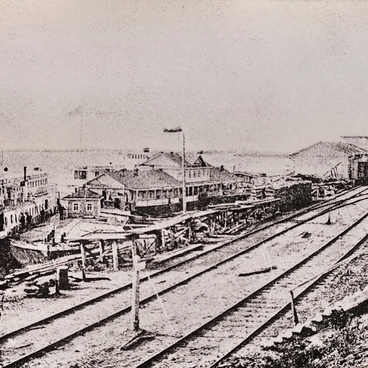/The Kotlas Museum of Local Lore was gifted the camera ‘Fotokor #1’ by the writer Mikhail Puzyrév (1915-2009). Puzyrév was a prose author, publicist, and member of the Union of Russian Writers. ‘Photokor-1’ is a Soviet plastic folding camera produced in the 1930s and 1940s. This is the first Soviet mass-produced camera; over one million were produced in 11 years.
The design is a universal rectangular camera with a double-extension accordion fold - the metal slide of the stand moves along the camera body and the stand itself moves along the slide. The fabric extension of the camera is accordioned. The body is covered with black imitation leather, and the metal components are chrome and nickel-plated. The camera is equipped with a liquid leveler, with which aids in setting the camera in a level horizontal position. Included with the ‘Fotokor #1’ is a hard leather case, which protected the equipment from shock and moisture.
The focusing system of the camera is based on frosted glass on the back of the body, as well as on the distance scale. For ease of use, the frosted glass door forms a small fabric shaft when opened. There were two viewfinders, one for rotating and one for framing, as well as two frames — one on the camera body and one on the lens stand. The photographic material was 9 × 12 cm glass plates, which were enclosed in metal cassettes of either a one-sided or two-sided retractable type. In the upper part of the case, there is a black leather handle-strap embossed with ‘Fotokor #1’. The camera is fastened with a screw mount to a light-brown wooden folding tripod.
‘Fotokor #1’, developed at the Leningrad plant GOMZ, was marketed as a universal camera. Thanks to the wide range of available exposure values, it was possible to shoot in a pavilion with a tripod, and in all other lighting conditions, as well as macro photography — a type of shooting in which small objects are depicted at a scale of 1: 1 or larger. ‘Fotokor #1’ became the quintessential camera for photographing the events of the Great Patriotic War.
The design is a universal rectangular camera with a double-extension accordion fold - the metal slide of the stand moves along the camera body and the stand itself moves along the slide. The fabric extension of the camera is accordioned. The body is covered with black imitation leather, and the metal components are chrome and nickel-plated. The camera is equipped with a liquid leveler, with which aids in setting the camera in a level horizontal position. Included with the ‘Fotokor #1’ is a hard leather case, which protected the equipment from shock and moisture.
The focusing system of the camera is based on frosted glass on the back of the body, as well as on the distance scale. For ease of use, the frosted glass door forms a small fabric shaft when opened. There were two viewfinders, one for rotating and one for framing, as well as two frames — one on the camera body and one on the lens stand. The photographic material was 9 × 12 cm glass plates, which were enclosed in metal cassettes of either a one-sided or two-sided retractable type. In the upper part of the case, there is a black leather handle-strap embossed with ‘Fotokor #1’. The camera is fastened with a screw mount to a light-brown wooden folding tripod.
‘Fotokor #1’, developed at the Leningrad plant GOMZ, was marketed as a universal camera. Thanks to the wide range of available exposure values, it was possible to shoot in a pavilion with a tripod, and in all other lighting conditions, as well as macro photography — a type of shooting in which small objects are depicted at a scale of 1: 1 or larger. ‘Fotokor #1’ became the quintessential camera for photographing the events of the Great Patriotic War.



